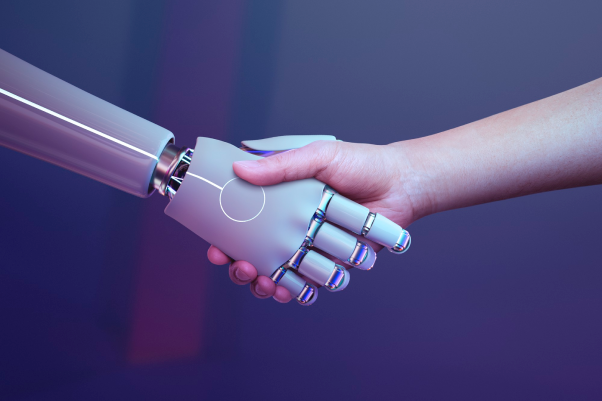Although the terms “machine learning,” “deep learning,” and “artificial intelligence (AI)” are sometimes used interchangeably in the commercial world, they actually refer to three separate but related processes. These names all refer to distinct pieces of the AI jigsaw, and it’s easy to get them mixed up.
Artificial intelligence has been used by businesses and governments for some time, but it is still a relatively young technology.
For those unfamiliar with the field, understanding the differences between data science and machine learning may seem like a moot point. However, as this technology continues to quickly advance, it is becoming increasingly crucial for professionals to comprehend these differences.
Facebook and Google are just two of several tech giants that employ AI to scour user images for advertising matches.
The content decisions and program recommendations at Netflix are also made with the help of AI. It’s hard to think of a well-known company that isn’t exploring the potential of AI to transform its industry. Knowing how the technology itself works will help when considering potential solutions. Two related fields are machine learning and deep learning.
Natural language processing (NLP) is a highly effective subfield of machine learning because it allows computers to understand the nuance of human speech, both orally and in writing. Recent research indicates that 40% of large companies utilize NLP for data analytics and customer service.
When it comes to the field of artificial intelligence, deep learning is the newest and most cutting-edge subset. By analyzing massive datasets, it enables the solution of previously intractable issues. Automation relies on the ability of deep learning algorithms to process data and make sound decisions.

Over 80% of what people watch on Netflix is suggested to them, so the recommendation algorithms must be doing something right.
Just think of the applications this technology could have in every field, not just entertainment, gaming, and sports. If you’re open to this new universe, the opportunities are limitless.
Numerous sectors are already making use of AI, and this trend is only expected to grow. One estimate puts the total amount spent on AI systems around the world in 2020 at $46 billion.
However, keep in mind that your AI initiatives need not be particularly complicated. Procedures that are currently done by hand but require a lot of paperwork are good candidates for automation.
AI can have a significant impact in several sectors, including financial operations, data entry, fraud detection, and customer loyalty. The use of AI can boost efficiency, productivity, and profitability in a company. Machine learning frees up workers to focus on strategic thinking and company growth rather than mundane administrative activities.
The marketing department, in particular, will like how less routine administrative work will give them more time to come up with new ways to solve problems. As it stands, marketers can choose from a wide variety of automated technologies designed to address certain issues. Email marketing algorithms are one application of AI in advertising; they can predict which messages will elicit the desired response from customers. Phrasee and Persado are just two examples of NLP-enabled platforms that let businesses automate the creation of subject lines, body text, and calls to action.

These headlines generated by AI outperform those written by humans 95% of the time, and they increase interaction with the content 100% of the time.
You can imagine the impact of implementing numerous marketing tools at once, but even this improvement is substantial for a single platform.
By using AI and ML, businesses and marketing departments will have access to new tools that will help them grow and succeed.
These AI solutions are helpful because they are easy to add to an organization’s current infrastructure and get smarter, more accurate, and more efficient over time.
The revolution in AI is already under way, but the truly remarkable developments are still to come. Now is a great moment to look into things further. Noting that AI and Machine Learning aren’t reserved for large corporations or IT behemoths is crucial. A wide variety of accessible and user-friendly AI tools and platforms are currently available.
Chatbots can be used for customer support, virtual assistants for scheduling, and predictive analytics for seeing trends and patterns in data, all of which are useful tools for small businesses. Furthermore, various AI services, such as cloud-based AI platforms and APIs, are accessible and may be easily integrated into preexisting systems.
Through these services, developers of existing programs and apps can include AI features like picture recognition and NLP into their creations. In addition, AI and Machine Learning are not reserved for the computer sector alone; they have already found applications in other sectors, including healthcare, finance, retail, transportation, and more.
In the medical field, for instance, AI is being used to evaluate images, aid in diagnosis and therapy, and ultimately benefit patients. In the financial sector, AI is being utilized to improve fraud detection, data analysis, and investment decision-making. Artificial intelligence and machine learning, in conclusion, are cutting-edge tools that can yield enormous gains for organizations of all sizes and in all sectors.
Their use can facilitate the automation of repetitive processes, the enhancement of decision-making, and the acceleration of corporate expansion. It’s an exciting time to be a part of this technological revolution since the potential for AI is only going to increase as technology advances.


